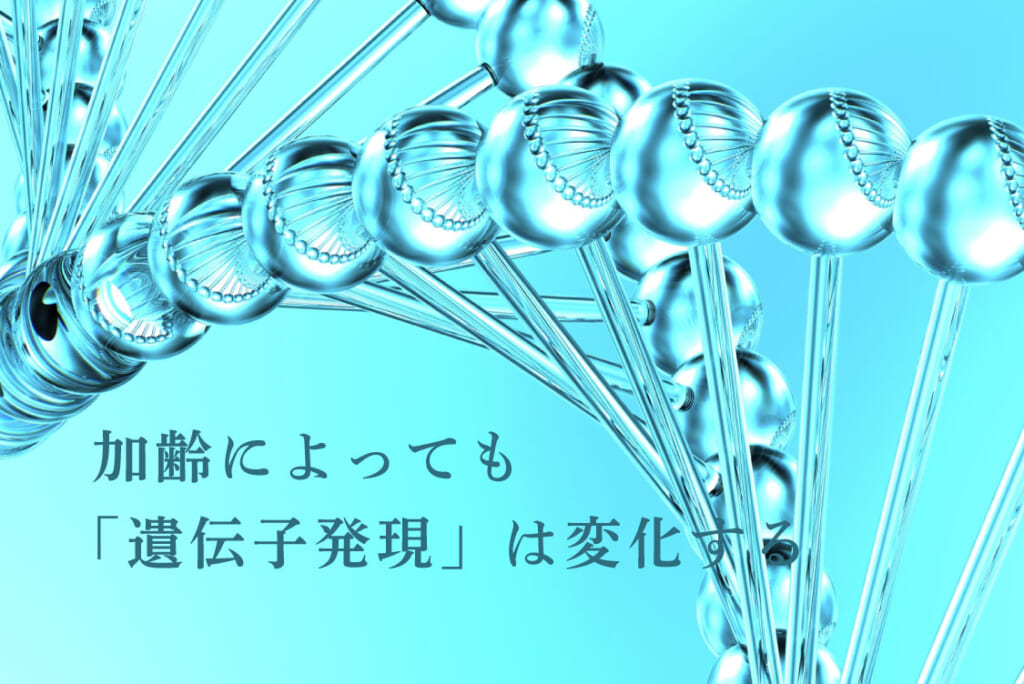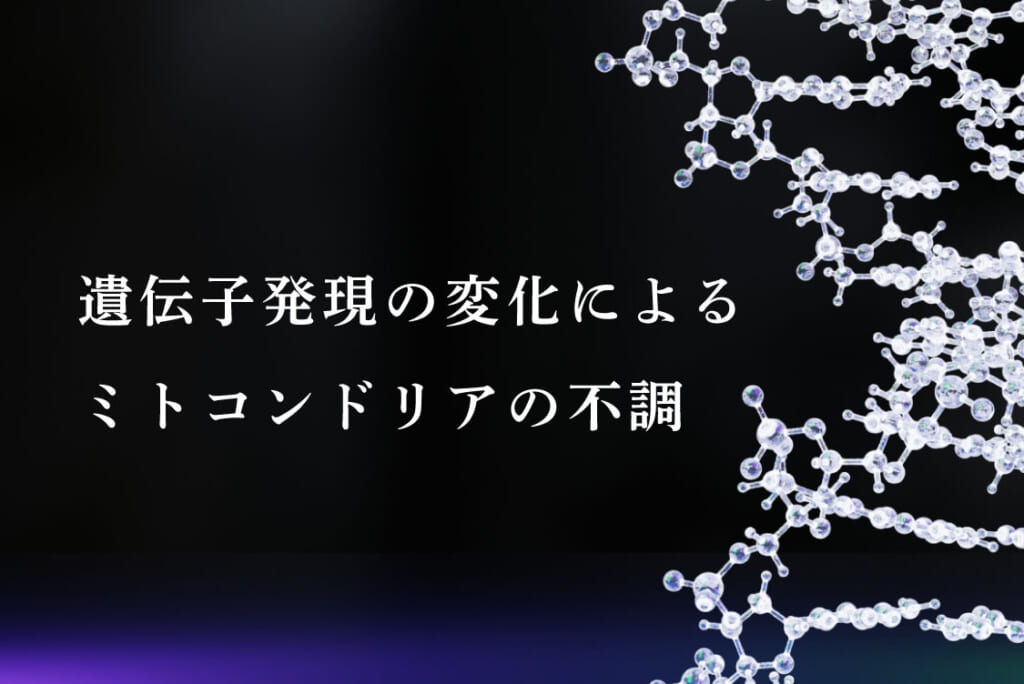
Gene expression also changes with age
As mentioned in previous articles, the blueprint of life, “genetic DNA,” remains unchanged throughout one’s lifetime. However, the part of this blueprint (the design for specific proteins) and the amount of protein produced (i.e., “gene expression”) are constantly changing moment by moment.
Due to these changes, the repertoire of proteins within each cell that makes up the body undergoes alterations, resulting in changes in the functions of the cells.
Gene expression gradually changes with aging. This age-related alteration in gene expression leads to changes in cellular functions, causing discomfort or issues in the body, commonly referred to as aging.
Is it possible to halt or reverse harmful changes in gene expression associated with aging?

Micro Power Plants Inside Cells – “Mitochondria”
In this and the next segment, let’s talk about the decrease in “Mitochondria” as one example of aging.
Mitochondria are tiny particles packed into each cell that makes up the body, ranging from tens to hundreds per cell. Upon closer examination, a single mitochondrion is composed of various types of proteins, numbering in the hundreds, and each protein closely collaborates to perform crucial functions at the very core of life.
The role of mitochondria is to chemically combine nutrients (such as sugars and fats) taken in through food and oxygen taken in through respiration, extracting the energy contained in nutrients. This process can be likened to a thermal power plant burning petroleum (i.e., chemically combining with oxygen) to extract electrical energy.
If the number of mitochondria decreases and their function deteriorates, cells enter a state similar to a region suffering from chronic power shortages, making every activity inconvenient.

Mitochondrial Dysfunction Due to Changes in Gene Expression
We discussed that the function of mitochondria requires various types of proteins, numbering in the hundreds. These proteins are produced through gene expression. In other words, the cause of mitochondrial dysfunction (power shortages) can be attributed to irregularities in gene expression.
(To be continued in the next segment)
